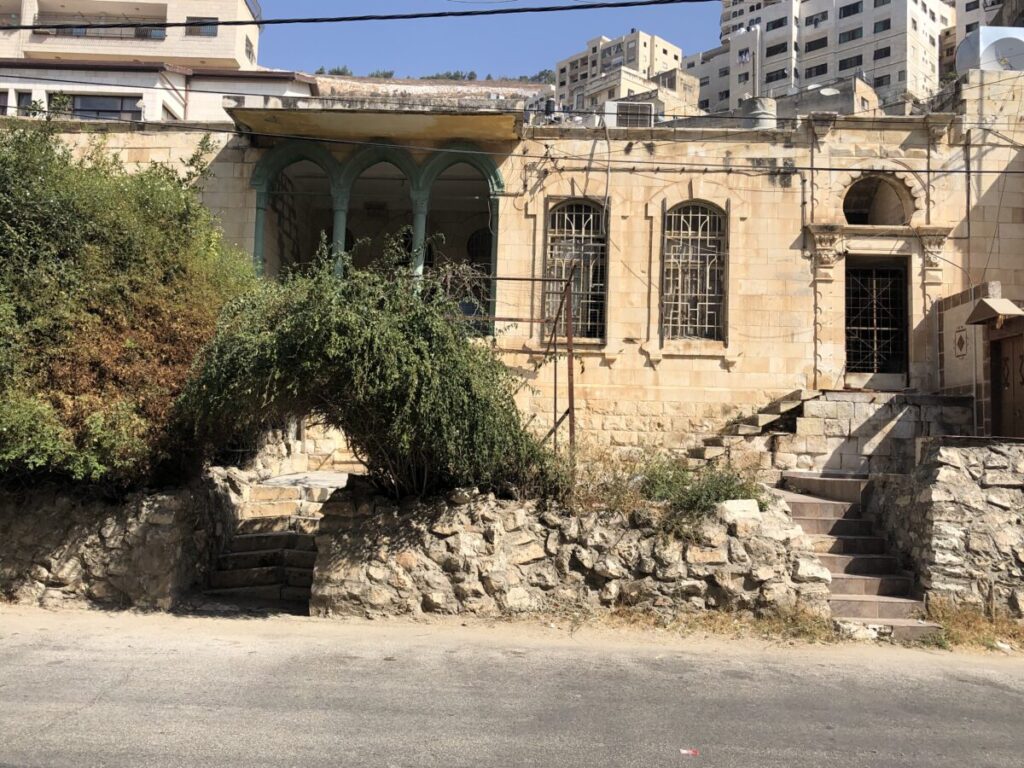Eman Al Assi, storyteller of spaces and guardian of memory, brings the past to life through her knowledge of architecture and heritage of Palestine. A specialist in heritage research and studies, she has dedicated a significant part of her work to documenting and preserving the cultural treasures of the Arab world. In this interview, Sana Tamzini explores with her the history of 22 houses in Nablus from the early 20th century.
What inspired you to document these 22 houses in Nablus, and how did you select them?
During my stay in Nablus, I noticed that many professionals and residents were particularly interested in the historic houses of the old city, often attributing more value to these buildings than to those I had selected. This research seems to focus on the architectural aspects of Palestinian houses built by their owners during a time marked by major transformations in the history of Palestine and the Arab world… But I also explore the spaces of these houses to relive with those who inhabited them, documenting their memories, their daily lives, and the events that shaped their dreams and transcended their sufferings. Theoretically, it aims to show how our historic cities reacted to political, economic, and social changes in the Levant region at that time. By reshaping and reconstructing urban environments, it highlights the strong relationship between place and its inhabitants.
The houses I chose are not located in the old city but are scattered across different areas of Nablus. Unfortunately, many of them have been neglected and are today, either demolished or abandoned.
You emphasize the relationship between place and its inhabitants. What are the most striking personal stories you have heard during your research on these houses?
Each house tells a unique story, contributing to the collective memory of the city of Nablus and Palestinian history. Some reflect the link between rural life and the urban economic structure of Nablus, particularly through traditional soap factories, which played a key role in the city's economy at that time. The soap produced here was exported throughout the Arab world. Others tell the story of the social fabric of the city, including the role of Palestinian women in education. Some are linked to influential figures with political connections to the Ottoman Empire, who became major players in the Arab nationalist movement. Some houses also testify to the connections between Palestinian cities like Jaffa and Damascus, which were crucial commercial centers at the time.
The book, which extends this research, tells the stories of houses dating from the first half of the 20th century, a period marked by major events in the Arab region, including the fall of the Ottoman Empire, the British mandate, and later the Jordanian administration. These houses reflect the architectural changes that occurred in Palestinian society and how they responded to the concept of modernity that was predominant in the region.
How did you make your selection?
I document 22 houses located outside the boundaries of the old city, spread all around and not limited to its confines. My choice is based on several criteria, including highlighting houses that are currently marginalized, as many preservation efforts, whether community or government-led, focus on houses from older periods. Neglected and abandoned by their original inhabitants for various reasons, they have either been reused and rehabilitated during the Jordanian administration or left to decay for many years, thus attracting the attention of investors who wish to demolish them to replace them with commercial buildings.
The importance of this research lies in shedding light on the modern architectural movement of the first half of the 20th century. It offers a descriptive and analytical analysis of these houses, their distinctive characteristics, and their connection to information about their builders, their evolution and transformations, as well as the nature of life that took place within them. Each house tells a story that contributes to the historical memory of Palestinian society of that time.
You also highlight the challenges these houses face today, including neglect and demolition. What do you see as the biggest obstacles to their preservation?
In my opinion, the main challenge lies in the ownership and the current situation of the original residents. What once belonged to a single person is now divided among several owners, many of whom no longer live in Nablus. Some have even lost their property rights due to the unjust legal conditions imposed by the Israeli occupation. These legal restrictions have deprived them of their land rights, as they have been prevented from returning to their homes.
Documenting these houses is the first step towards their preservation and the memory they carry. They represent a critical period in Palestinian history.
I hope that with the completion of this book, other houses in Nablus representing this period will be studied. Ideally, this research could extend to other Palestinian cities. This would create a rich database for the study of a specific type of Palestinian residential architecture, particularly that based on the central hall model, which was common throughout the Bilad al-Sham (the "land of Sham," the Fertile Crescent).

Featured Photo: The balcony of the Zaiter family house overlooking the modern expansion of Nablus, © Eman Assi, 2023.
Sana Tamzini, artist and exhibition curator. She directed the National Center for Living Art in Tunis from 2011 to 2013. She is also the president of the Fanak Fund for the mobility of artists and cultural operators.
